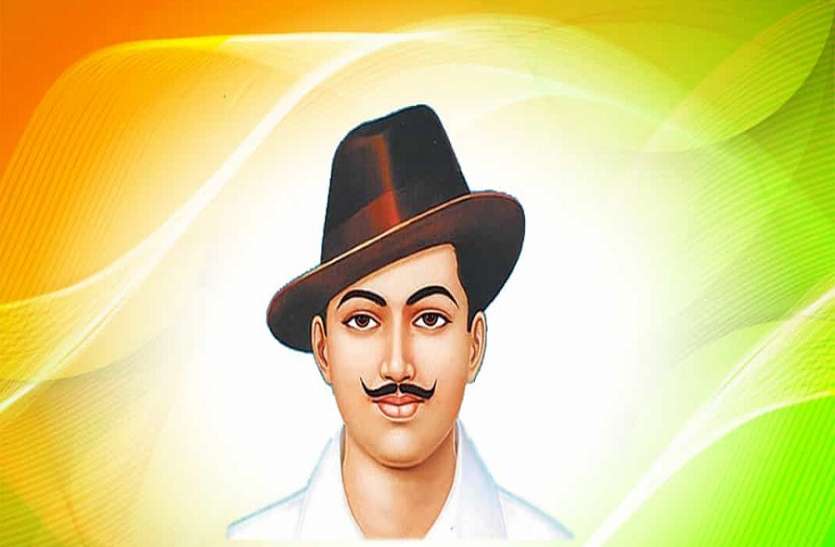Bhagat Singh Biography, Education, Movement and Cause of Death

Bhagat Singh Biography, Education, Movement and Cause of Death
Some such things about Shaheed Bhagat Singh ji that no one has ever heard. If there is any issue in the biography of Bhagat Singh, then ask, we will try our best to answer.
Biography of Bhagat Singh
- Name Shaheed Bhagat Singh
- Born 28 September 1907
- Birthplace Village Banga, District Lyallpur, Punjab (now in Pakistan)
- Died 23 March 1931
- Place of Death Lahore Jail, Punjab (now in Pakistan)
- Movement Indian Freedom Struggle
- Father Sardar Kishan Singh Sindhu
- Mother Smt. Vidyavati ji
- siblings
- Ranveer, Kultar, Rajinder, Kulbir, Jagat, Prakash Kaur, Amar Kaur, Shakuntala Kaur
- Uncle Shri Ajit Singh Ji
- major organization
- Naujawan Bharat Sabha, Hindustan Socialist Republican Association
- Shaheed Bhagat Singh Biography
Talking about Bhagat Singh ji, Bhagat Singh was born on September 28, 1907 in Banga of Lyallpur district, which is now in Pakistan.
The name of Sardar Bhagat Singh is taken as the most prominent among the immortal martyrs. His native village is Khatkar Kalan which is in Punjab, India. His father’s name was Sardar Kishan Singh Sindhu and mother’s name was Mrs. Vidyavati.
India’s greatest freedom fighter Shaheed Bhagat Singh is the great strength of India, who has given us the power to die on our country and what is patriotism.
Bhagat Singh ji can never be forgotten, no one can measure the sacrifice made by him. At the age of 23, he sacrificed his life and his family and the happiness of his youth for his country so that today we can live in peace.
At the time of India’s freedom struggle, Bhagat Singh was born in a Sikh family and raised the head of the Sikh community with pride.
In the year 1919, when the Jallianwala Bagh massacre opened the blood of Bhagat Singh and he fully supported the non-cooperation movement launched by Mahatma Gandhi. Bhagat Singh ji used to challenge the British at any time as if he would have kicked the British away anytime.
Bhagat ji used to burn British books at the behest of Mahatma Gandhi, these naughty acts of Bhagat ji remind him of him and after hearing them, tears come to his eyes.
Gandhiji was forced to stop the non-cooperation movement on the violent activity of Chauri Chaura, but Bhagatji could not digest this, his anger rose even more and leaving Gandhiji’s side, he got hold of another party.
He was doing BA from the National College of Lahore and he met Sukhdev, Bhagwati Charan and some fighters and the freedom struggle intensified even more, and then what was he left his studies and jumped into the fight for freedom.
For Bhagat Singh ji’s marriage, his family was thinking that Bhagat ji refused to marry and said “If I marry before independence, then my bride will die.”
Bhagat Singh Biography: Bhagat ji used to participate in many plays in college, he was also a very good actor, his plays included only patriotism, because of those plays, he always inspired the young youth for patriotism and the British They also used to make fun of him and used to humiliate him. Because the intention of the British was wrong.
Bhagat Singh ji was a great man and he was very fond of writing lakes. In college, he also received many awards in essay.
Bhagat Singh’s hand in India’s independence
When the people of Bhagat Singh ji’s family lost that now they have to think later for Bhagat Singh ji’s marriage and Bhagat Singh ji was convinced that now his family would not be behind, only then he came back to Lahore and joined Kirti Kisan Party. Started socializing with the people of K.K. and started working for their magazine “Kirti”.
Through this he used to give his message to the youth of the country. Bhagat ji was also a very good writer and he also wrote for Punjabi and Urdu newspapers.
In 1926, Bhagat Singh was made the secretary in the Naujawan Bharat Sabha and after that in 1928 he joined the Hindustan Socialist Republican Association (HSRA). It was made by Chandrashekhar Azad and the whole party came together and came to India on 30 October 1928. He opposed the Simon Commission and was accompanied by Lala Lajpat Rai.
Raising the slogan “Go back Simon”, they stood at the Lahore railway station, due to their movement they were lathi-charged and lathi-charged.
Lala ji was badly injured and died. With his death, the movement for the independence of the country further accelerated.
Bhagat Singh ji and his party got a big setback and they were determined that the British would have to answer it and kill the people responsible for Lala ji’s death, what was then they made a plan to kill the British.
He was supposed to kill Police Officer Scott but accidentally killed Assistant Police Saunders.
To save himself, Bhagat Singh then went to Lahore.
The English police laid traps all around to catch them. Bhagat Singh ji had cut his hair and beard in favor of saving himself so that no one could recognize him.
Although this hair and beard cut was to go against the Sikh community, but Bhagat Singh did not see anything other than the love of the country. Chandrashekhar, Rajdev and Sukhdev had all met with Bhagat and they were determined to make some big bang.
Bhagat Singh ji used to say that the ears of the British are deaf and they hear high, for which a big bang is necessary.
When did Bhagat Singh throw a bomb in the assembly?
Bhagat Singh Biography
On 8 April 1929, Bhagat ji, along with his fellow revolutionary Batukeshwar Dutt, detonated a bomb in the assembly of the British government, that bomb made only sound and it was thrown only in empty space so that no one would be harmed. They raised slogans of Inquilab Zindabad and distributed pamphlets and after that both got themselves arrested. They could have run if they wanted but they didn’t.
By doing this, Bhagat Singh ji showed the people of India and the British what an Indian can do, Bhagat Singh used to call himself a martyr and by seeing his love for his country, it was proved that he is a revolutionary and on his death he Will not die but will be martyr.
Bhagat Singh Rajguru Sukhdev was tried and after which he was sentenced to death, in the court also all three of them raised the slogan of Inquilab.
They started burning the dead body with kerosene oil instead of ghee, and when the villagers came near the burning fire, the British started running out of fear and the British threw the half-burnt body into the Sutlej river and fled.
The villagers came near and collected the pieces of Shaheed Bhagat Singh ji and performed the last rites.
Behavior of Bhagat Singh – History of Bhagat Singh
The letters etc. written by Bhagat Singh ji during his jail days reveal his thinking and thoughts. According to him, he expressed grief over the differences in caste and religion due to the specialties in languages such as Gurmukhi and Shahmukhi for Punjabi and different languages like Hindi Arabic.
If any Hindu also used to oppress any weaker section, then he too felt as if some British were atrocities on Hindus.
Bhagat Singh ji knew many languages and apart from English also knew Bengali which he had learned from Batukeshwar Dutt. He believed that his martyrdom would make the Indian public more aware and Bhagat Singh had refused to write an apology even after hearing the news of the hanging.
They always care about this, what is the new tarz-e-zafa?
We have this hobby, see, what is the status of Sitam?
Why be angry with fear, what should be done to the charkha.
Sarah where Adu is right, come! Compete.
His bravery can be gauged from these passionate lines. At the time of his first meeting with Chandrashekhar Azad, he swore by placing his hand on the burning candle that his life would be sacrificed on the country itself and he fulfilled that vow. They can’t even be forgotten.
Reputation and respect received by Shaheed Bhagat Singh ji
The news of the martyrdom of Bhagat Singh ji was published by the Daily Tribune of Lahore and a letter from New York Daily Worker. After that articles were published on him in many Marxist papers, but because the arrival of Marxist papers was banned in India in those days, Indian intellectuals were not aware of it. His martyrdom was remembered across the country.
Even today the people of India and Pakistan see Bhagat Singh as a lover of freedom, who dedicated his entire life including his youth for the country.
Bhagat Singh had decided not to appear before the judges, questioning the fairness of the trial in the court, but at the same time he wanted the British government to let them inspect the occasion if they wanted to prove the trial fair. , where British police officer Saunders was put to death by the revolutionaries.
Bhagat Singh wrote this letter to the Special Magistrate of Lahore in connection with the case registered against him and his associates Rajguru and Sukhdev under sections 121A, 302 and 120B in the Saunders murder case.
Conclusion
According to Yadvinder Singh Sandhu, grandson of Shaheed-e-Azam, Bhagat Singh had written this letter to prove his motive in the Saunders murder case and that is why he wanted to inspect the road and the spot where Saunders was killed.
Bhagat Singh has written in his letter that the petitioner (accused) is not going to represent himself in the court but if the government is impartial about the trial, then it will send him to the spot (the place where Saunders was killed) and the surrounding areas with reference to the alleged incident. Get it inspected.
He has written that the government should provide him proper arrangements for spot inspection and also give him a chance to cross-examine the witnesses.
Shaheed-e-Azam wrote that the hearing of the case should be adjourned till he gets an opportunity of cross-examination and inspection of the spot. It is noteworthy that Chandrashekhar Azad, Bhagat Singh, Rajguru, Sukhdev and Shivram had planned to kill Superintendent of Police James A Scott to avenge the death of Lala Lajpat Rai.
He carried out his plan on December 17, 1928, at around 4.15 pm, but due to a mistaken identity, Scott was killed in place of Assistant Superintendent of Police John P. Saunders, during which a head constable named Chanan Singh was also killed, who was the revolutionaries. was running to catch him.
This case came to be known as Lahore Conspiracy in which Rajguru, Sukhdev, Bhagat Singh were sentenced to death.
The British government hanged these three revolutionaries a night before the scheduled time. On 23 March 1931, these three great revolutionaries were hanged to the gallows in the Lahore Central Jail.
If you enjoy reading Shaheed Bhagat Singh Biography, then please do not forget to share it with friends etc.
References
- My Wikies
- Teach Me Techno
- Top 10 Desire
SHARE
Stay in touch
To be updated with all the latest news, offers and special announcements.







